“What water?” exclaims Naseema, about her experience with the Central government’s ₹3.6-trillion Jal Jeevan Mission that aims to provide free, piped water to every village home in India by 2024. Peeved, she waves her free hand — the other clutches a sack of rubbish – to point out her house in Supasi-Azadpur, Unnao district, Uttar Pradesh. A cluster of about 250 houses, Supasi-Azadpur is a segregated slum, or a ‘dera’, on the outskirts of Supasi village. The houses are single-storey, plaster-peeling shanties with the familiar sight of young girls hauling water pitchers from the nearest hand pump. Narrow channels of sewage — black and thick with muck — serve as markers to delineate one house from another. “During the monsoon, it is the worst. Water rises waist-high and we have to wade through all kinds of dirt to get to our houses,” says Naseema, who goes by one name, and makes a living as a rag-picker.
The dera, dominated by Nat-Muslims (U.P.’s Pasmanda Dalit community), as a resident describes it, has never been considered a formal part of the larger Supasi village. The most prominent public building in the hamlet is a mosque that also doubles as a madrasa. The nearest school in the village is 2 km away and the extremely informal nature of employment means that most children spend their day on its premises. “We are used to multiple visits by panchayat and district officials. They promise us water connections. Then there are visits by politicians during elections; that are never kept. What is Jal Jeevan?” queries Muhammad Khurshid Aalam, the imam at the mosque, while intermittently bellowing at the scores of children — some wailing, some laughing, some screaming, some memorising the Quran — to be orderly. “You mean we will get taps and water without paying for it?” he says, his eyes widening.
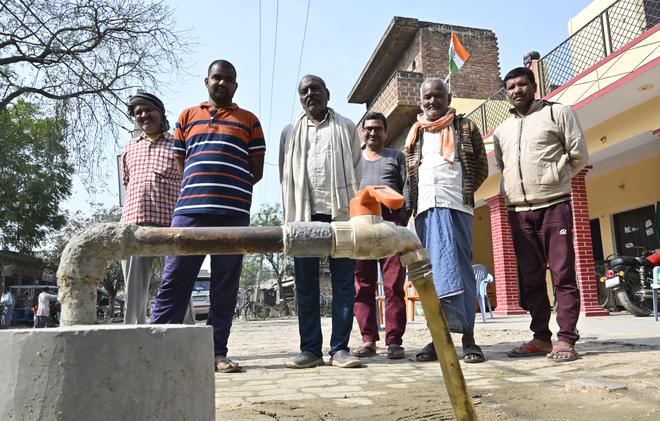
The Jal Jeevan Mission was announced in 2019, but got off to a slow start and picked up steam only after the COVID-19 pandemic. As of last month, about 74% of India’s 19.2 crore rural households have received tap connections, up from 3.2 crore in 2019, according to a dashboard maintained by the nodal Jal Shakti Ministry. In Uttar Pradesh alone, the number of tap connections has risen from 5.1 lakh in 2019 to 2 crore, the highest among all States.
However, as The Hindu has reported earlier, these numbers do not imply that three-fourths of Uttar Pradesh’s 2.6 crore households have functioning tap connections. A significant number is ‘self reported’, that is State officials report that connections have been provided and there isn’t yet a count of how many households have independently been ‘certified’ by the gram panchayat as having a working tap connection.
While the Jal Jeevan data portal graphically maps out the extent of coverage in U.P. districts — with deepening hues of blue representing coverage over 30% — only one district, right in the middle of India’s most populous State, conspicuously stands out in leucodermic pink. Unnao, a mid-sized district with about 4.8 lakh households and 1,654 villages — even officially — reports only 20% of households as having functional tap connections. This is still a rise from the 1.9% of households reported with connections in 2019. However, only about 3% of villages within Unnao have been certified as having functional tap connections by their panchayats.
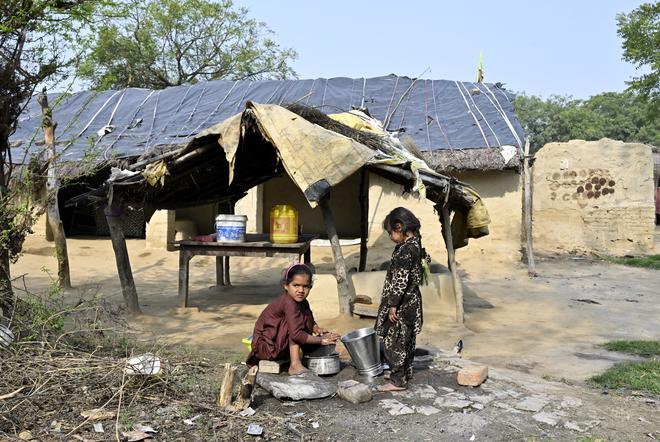
The fall of the tanneries
Situated between the bigger cities of Kanpur and Lucknow, Unnao is a predominantly rural district, home to several tanneries, spilling over from the adjoining Kanpur belt. Its history goes back to a time when military accoutrements for the cavalry, like saddles, horse-shoes, and stirrups were made here, first for the Mughal empire, and later for the East India Company. The Unnao-Kanpur industrial leather cluster is one of the largest manufacturing clusters in India, with a sizeable presence in leather apparel and accessory exports.
However, the last decades have been tough on the industry, both in Kanpur and Unnao, with the hundreds of tanneries in the area being held responsible for polluting the Ganga that flows through Unnao. The government’s Namami Gange Programme, has in the last decade, focussed significant efforts on commissioning sewage infrastructure and treatment plants as well as getting tannery associations to either shut operations or pool resources to establish new effluent treatment plants that treat the waste water from their units. This has led to significant conflict.
An existing common effluent treatment plant at Unnao, which has a capacity to treat 2.15 million litres of effluents from tanneries, was deemed insufficient to handle the actual load from the region’s tanneries. The National Mission for Clean Ganga (NMCG), which coordinates the clean-up of the Namami Gange Programme, has, in the last decade, taken a more active role in clamping down on polluting tanneries.
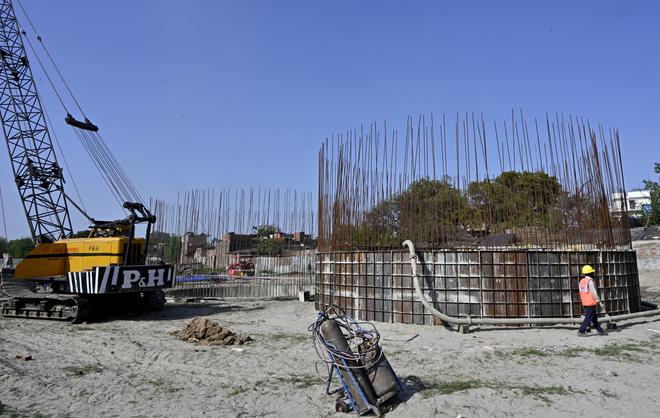
Taj Alam, the proprietor of King’s International, one of the larger tanneries in the area, says the process amounted to undue interference. “Unfortunately, the NMCG in its functioning seems to be superseding both the Central Pollution Control Board and State Pollution Control Board. It is as if tanneries are the major source of pollution in the Ganga and we (tannery units) have to pay more than our fair share to fix it,” he says. Up to 14 Unnao tanneries, including King’s, are expected to cough up ₹31 crore or about 25% of the ₹125 crore needed for the treatment plant.
“Many tanneries have shut shop. The restrictions on cattle slaughter and frequent closures of tanneries, particularly during the Kumbh Mela, have led to an erosion of business. Vietnam, with barely any cattle of its own, is now a $15-billion leather exporting industry. India is $5 billion. We are losing out. In the last decade, the Centre’s constant interference in business has ruined prospects,” he adds. His own firm, mirroring others, has begun to diversify its business outside of leather-apparel to “synthetic” goods.
One of the major historical reasons for the success of the leather industry in the Kanpur-Unnao belt was the presence of the Ganga and the “salty water”, as Nayyar Jamal, an advocate and tannery proprietor, describes. However, this elevated presence of salts is reflected in the high fluoride content in the groundwater, one that makes it unpalatable.
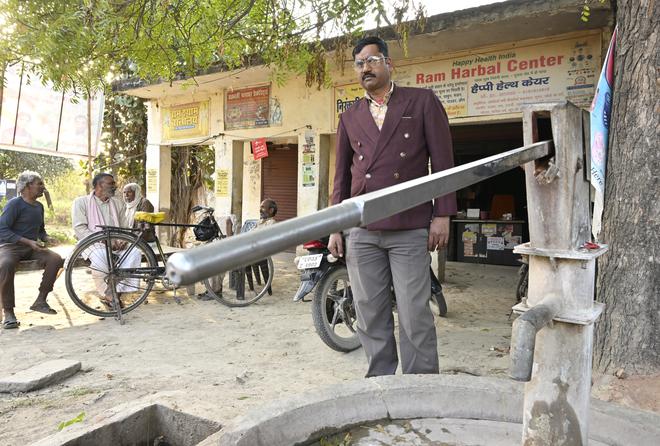
Ram Naresh Azad, an Ayurveda practitioner, has set up an office in the Tikargarhi village of Unnao. He is a resident of the nearby Badarka village, which is proud of the revolutionary leader and freedom fighter Chandrashekhar Azad. The ‘rural-urban’ village is dominated by pucca houses, there are taps in the courtyards, and submersible pumps to draw water into storage tanks. “For more than 10 years, we’ve had a large tank that supplies water for an hour or two in a day. But that groundwater isn’t good. There have been illnesses reported. There is an alternate supply that is connected to a water filtration plant. That’s the water most of us use. This system works well so far,” Azad says.
The village is predominantly Hindu with a mix of upper and lower castes. The big change over the last decade has been a steady supply of electricity. “Even five years ago, power used to be available for three hours in the morning and sometimes at night. Now, we have electricity for at least 18 hours,” he adds.
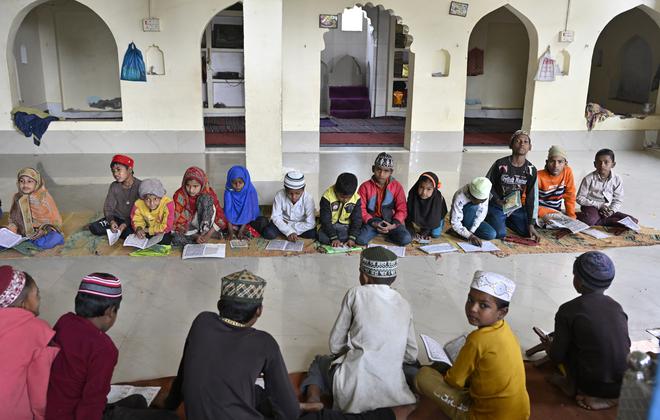
Salinity challenge
Away from the industrial, more urban parts of the district, the Lucknow-Kanpur-Unnao highway branches off into several villages. Concrete godowns give way to open vistas of guava orchards, an important crop, as it’s a major source of income in this belt.
Baliya Kheda, a hamlet of about 200 households, is extremely dependent on fruit picking. There is little else by way of economic opportunities, with many of the men in the village opting to take up daily wage labour in adjoining Lucknow, Banthar, and Kanpur. Women are involved in the household or fruit picking. Though Tikargarh and Baliya Kheda are an hour’s drive apart, the convenience of 18-hour electric supply is alien to this part of Unnao. An electric pole is visible, but residents say several houses received “high” electricity bills and chose to have their connections cut off rather than pay them.
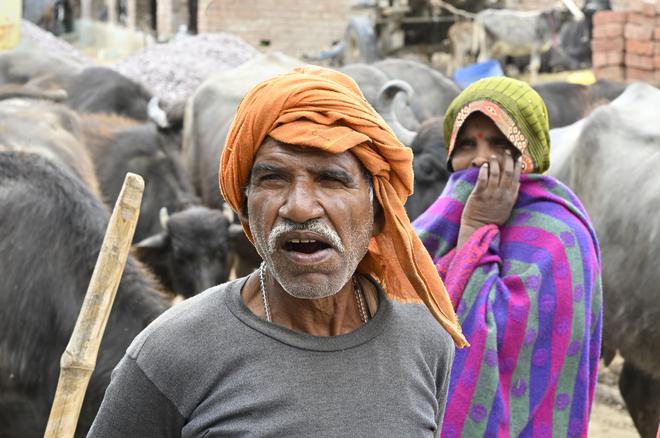
Monu, a resident farmer, says he was unaware of the government’s Jal Jeevan Mission and blamed the high salinity in the groundwater, ironically on the (Namami Gange) “mission” that is working on tapping sewage water drains and directing them to treatment plants before releasing it into the Ganga. “Much of the tannery waste is being diverted and making its way into the ground. This wasn’t the case in the village before. The water that we get has a yellowish tinge,” he says.
At the local primary school in Khanapura, a 20 minute-drive from Baliya Kheda, teachers say they would rather not drink the water from the hand pumps. “There is a reverse osmosis treatment system. It’s the local gram panchayat’s responsibility to maintain it, but it is not always reliable,” says Fakhrul Islam, the head teacher and resident of Kanpur, who commutes an hour every day to teach at the school. “The mid-day meal system is a vital source of support. We have pass rates of 70%. Most children from here go on to upper primary and high school,” he says.
A major challenge though was during the guava fruiting season. “Many parents pull their children out of school and involve them with the plucking and gathering. That significantly affects enrolment,” he rues. Garbage, hygiene, and littering posed serious challenges to the “sanctity” of the school premises. “Have you seen the liquor vend nearby? How can you have that right next to a school?”
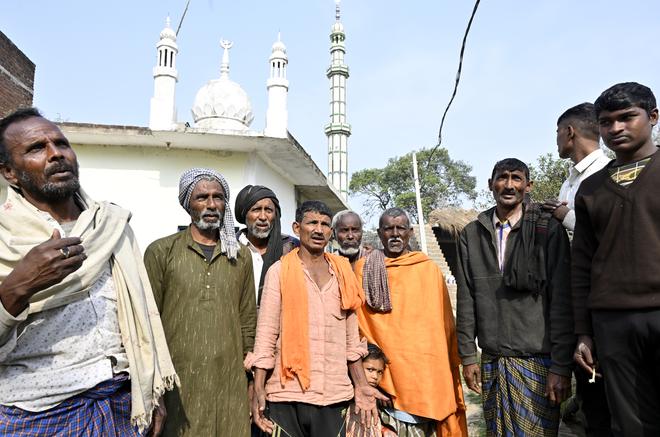
Away from the verdant orchards and at the local water board’s office, several administrative staff are preparing for a ‘visit’ by Unnao’s District Magistrate to inspect the progress of the Jal Jeevan Mission. Puneet Kumar, assistant engineer and in-charge of a slew of water management works, explains that Unnao’s limited adoption of the Jal Jeevan scheme was due to a “belated” realisation that the high fluoride levels in the groundwater would make supplying potable water to all households, a challenge.
“Like other districts, the administration prepared a project report to supply water from groundwater. But later on, Unnao and six other districts in U.P. were asked to draw water from the Ganga and use that as the main source of supply. The process of tendering and finding a company for the civil work took time, but now we expect the work to be complete by January 2025,” he speculates.
At the Ganga barrage, a water diversion and pump house structure is in the early stages of construction. Engineers and workers in hard hats scurry in anticipation of an inspection. “Let this be completed and following this, a water treatment plant. After that we will provide taps and pipes,” one says. The others concur.



!["[T]he First and Fifth Amendments Require ICE to Provide Information About the Whereabouts of a Detained Person"](https://images.inkl.com/s3/publisher/cover/212/reason-cover.png?w=600)



